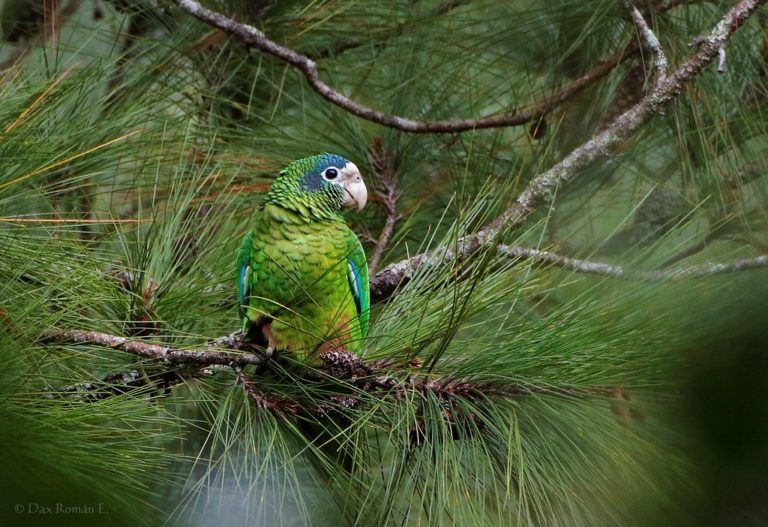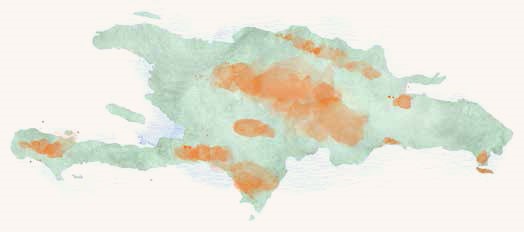Birdfinding.info ⇒ Long persecuted as an agricultural pest and for the illicit pet trade, this species has endured major declines and is now highly localized. In the southwestern D.R., it is readily found in the upper and middle sections of Alcoa Road. Somewhat less consistent at Zapotén, La Placa, the Rabo de Gato Trail, and Cachote. In the Cordillera Central, Ébano Verde is a reliable site. The resorts around Punta Cana are among the most likely places to find it.
Hispaniolan Parrot
Amazona ventralis
Endemic to Hispaniola, where it is patchily distributed, mainly in mountain forests, dispersing over a wider range of habitats to feed. Formerly much more numerous and widespread.
Common in pine forests of the Sierra de Bahoruco and parts of the Cordillera Central. Smaller numbers persist in the Massif de la Hotte, Sierra de Neiba, and northern ranges of Haiti and the D.R.
Also occurs in palm savannas and dry forests of the eastern lowlands, especially in the area from Del Este National Park (including Isla Saona) to Punta Cana, with a few remaining in Los Haitises National Park.
Urban populations are established in Santo Domingo, Port-au-Prince, and Santiago de los Cabelleros.
Identification
The only Amazona on Hispaniola, so it is unlikely to be confused within its normal range. Distinctive features include its white forehead and eyering, blue forecrown, blackish ear-patch, ivory bill, blue flight feathers, and maroon (often V-shaped) belly patch.
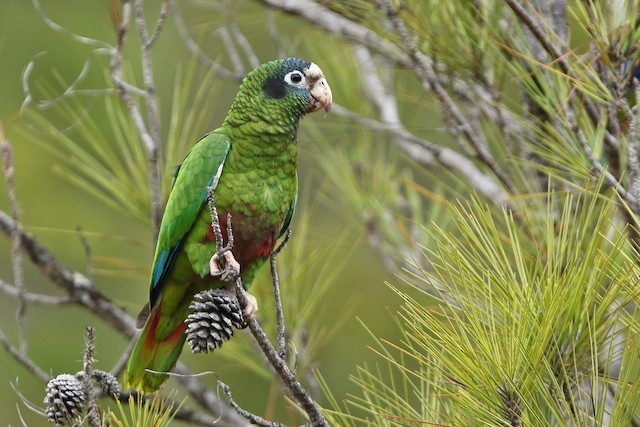
Hispaniolan Parrot. (Alcoa Road, Dominican Republic; April 11, 2019.) © Volker Hesse
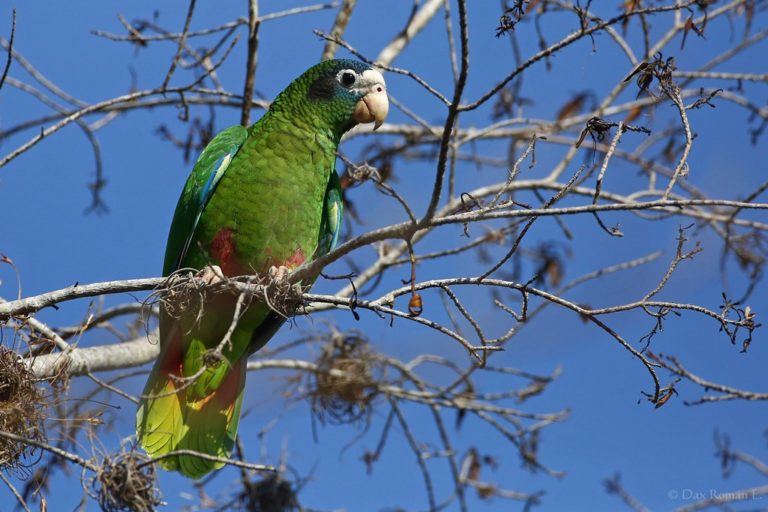
Hispaniolan Parrot. (La Mina, Sierra de Bahoruco, Dominican Republic; April 10, 2014.) © Dax M. Román E.
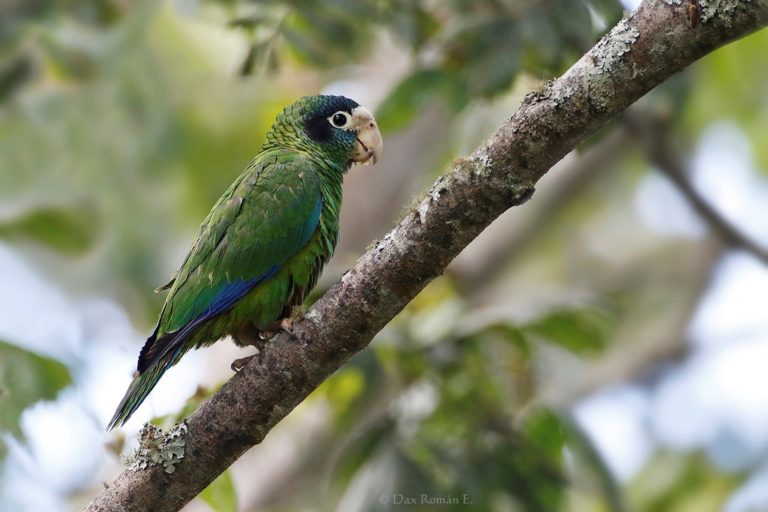
Hispaniolan Parrot. (Ébano Verde Scientific Reserve, Dominican Republic; April 11, 2015.) © Dax M. Román E.
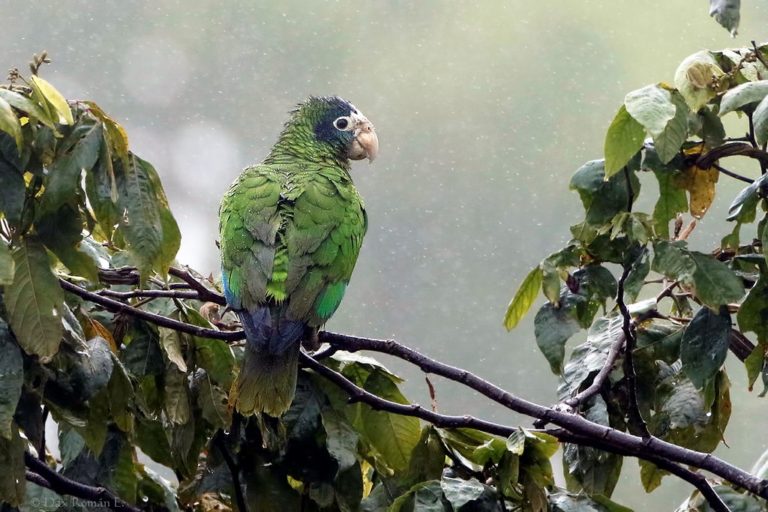
Hispaniolan Parrot, drenched by rain. (Ébano Verde Scientific Reserve, Dominican Republic; January 21, 2016.) © Dax M. Román E.
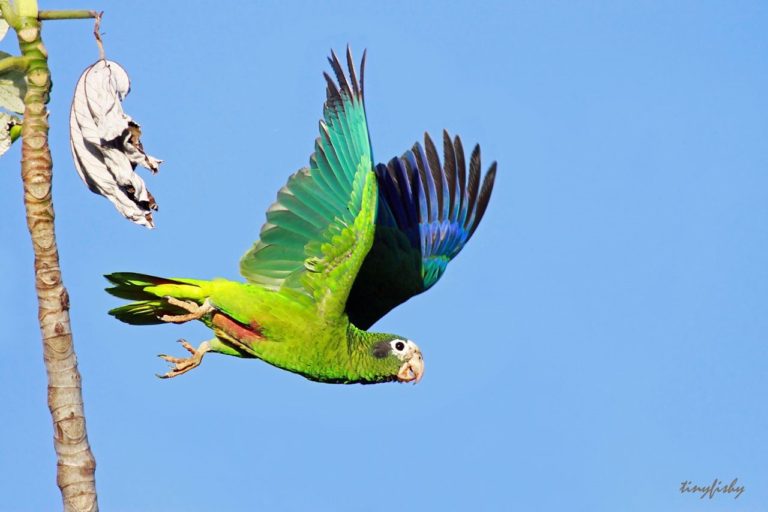
Hispaniolan Parrot, showing turquoise underwing and deep blue upperwing. (Punta Cana, Dominican Republic.) © tinyfishy
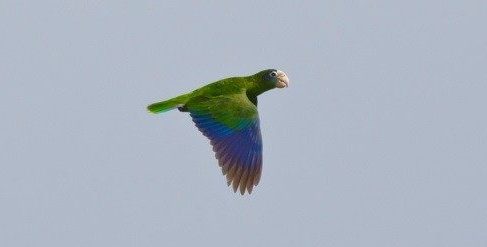
Hispaniolan Parrot, showing largely blue upperwing. (Punta Cana, Dominican Republic; February 14, 2012.) © Atle Espen Helgesen
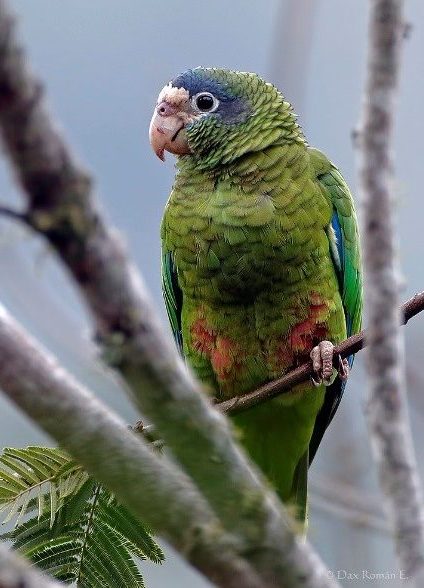
Hispaniolan Parrot. (Ébano Verde Scientific Reserve, Dominican Republic; January 28, 2015.) © Dax M. Román E.
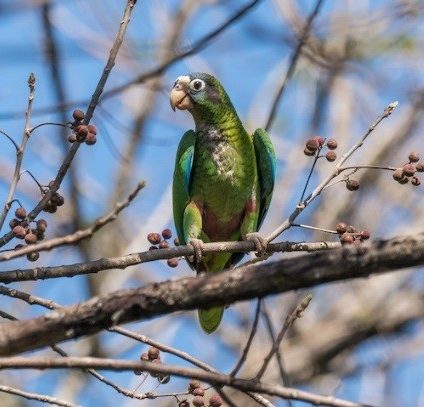
Hispaniolan Parrot, showing a V-shaped maroon patch on the belly. (Zapotén, Dominican Republic; March 28, 2017.) © James Moore
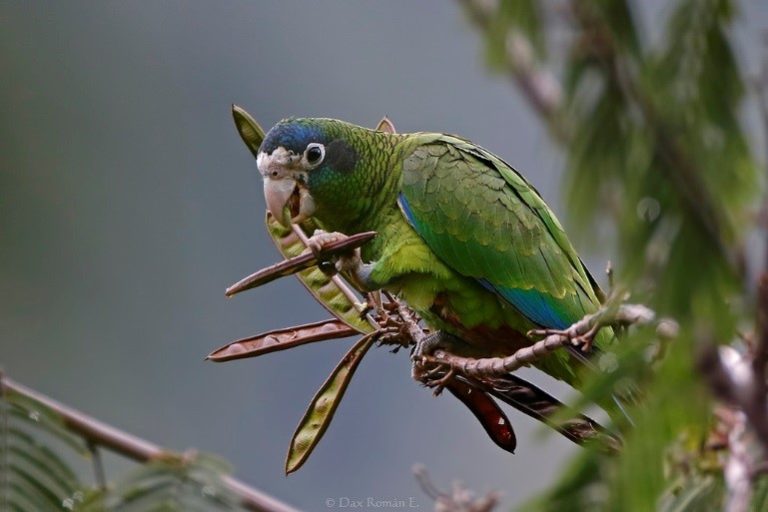
Hispaniolan Parrot. (Ébano Verde Scientific Reserve, Dominican Republic; January 28, 2015.) © Dax M. Román E.
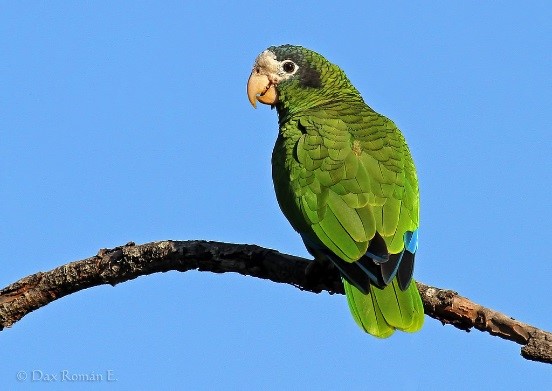
Hispaniolan Parrot. (Sierra de Bahoruco, Dominican Republic; November 12, 2011.) © Dax M. Román E.
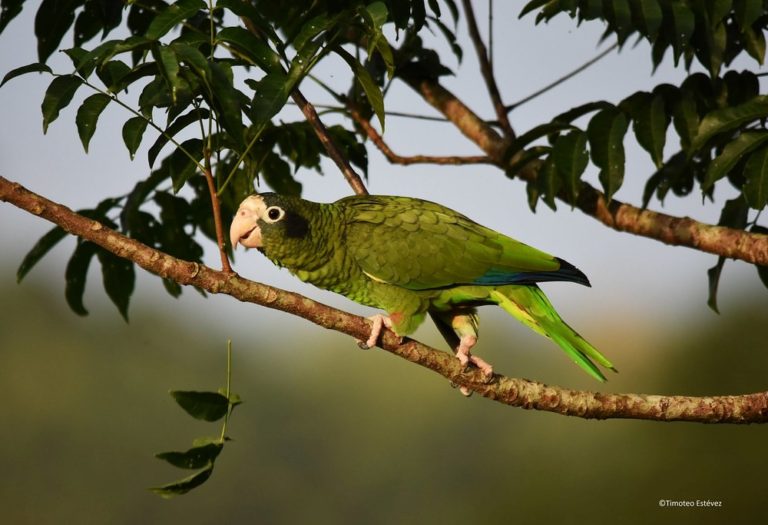
Hispaniolan Parrot. (Dominican Republic; January 6, 2016.) © Timoteo Estévez
Notes
Monotypic species.
IUCN Red List Status: Vulnerable.
References
Alas & Colores: Hispaniolan Parrot (Amazona ventralis), https://alasycolores.com.do/en/aves/cotorra-de-la-espanola.
BirdLife International. 2016. Amazona ventralis. The IUCN Red List of Threatened Species 2016: e.T22686215A93103000. http://dx.doi.org/10.2305/IUCN.UK.2016-3.RLTS.T22686215A93103000.en. (Accessed November 13, 2017.)
eBird. 2019. eBird: An online database of bird distribution and abundance. Cornell Lab of Ornithology, Ithaca, N.Y. http://www.ebird.org. (Accessed May 3, 2019.)
Forshaw, J.M. 2010. Parrots of the World. Princeton University Press, Princeton, N.J.
Latta, S., C. Rimmer, A. Keith, J. Wiley, H. Raffaele, K. McFarland, and E. Fernandez. 2006. Birds of the Dominican Republic and Haiti. Princeton University Press, Princeton, N.J.
Raffaele, H., J. Wiley, O. Garrido, A. Keith, and J. Raffaele. 1998. A Guide to the Birds of the West Indies. Princeton University Press, Princeton, N.J.
